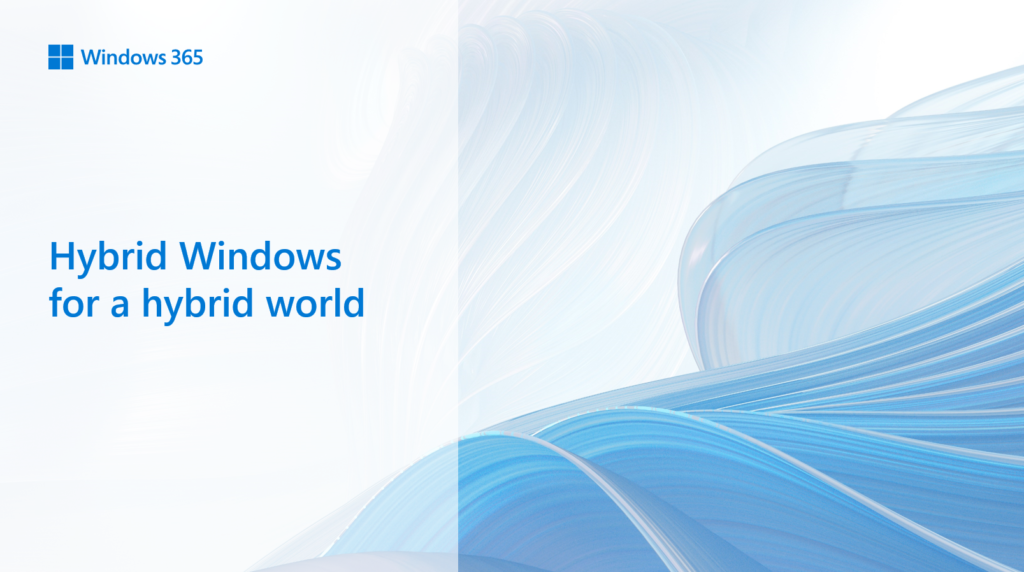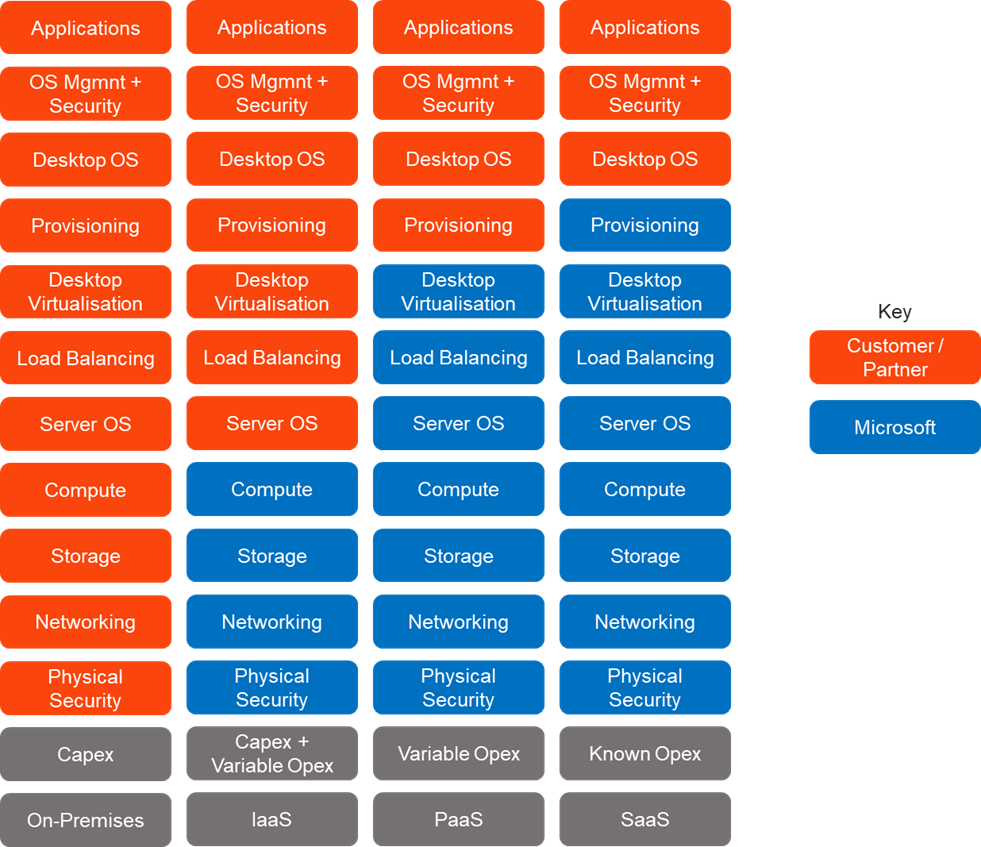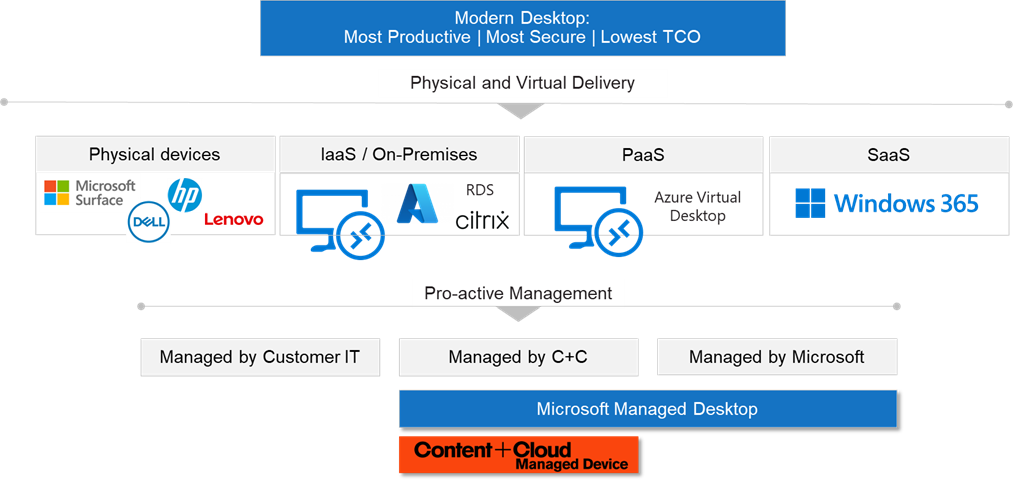
Today, in his Microsoft Inspire conference Keynote, Microsoft Executive Chairman and CEO Satya Nadella announced the launch of a new product, Windows 365, delivering Cloud PCs and heralding an era of hybrid Windows for a hybrid world.
The desktop is one of the most important elements of any IT architecture and the one which has most impact for the user: It’s our gateway to the cloud and throughout the COVID 19 pandemic, has also been our window on the world. It enabled all communication, collaboration and productivity for remote workers.
The desktop has, however, been the slowest element of IT architecture to benefit from the power of the Cloud. Partly because there is an obvious reliance on physical equipment, but also because we relied on legacy on-premises infrastructure to securely connect to and manage devices.
This has been changing over the past couple of years with Microsoft creating the cloud-managed Modern Desktop and modernising virtual desktop services by introducing products such as Azure Virtual Desktop.
Windows 11 was recently launched as the new operating system for the world of hybrid work. Now Microsoft completes its cloud-managed device offering with the launch of Windows 365.
Our involvement with Windows 365

Content+Cloud is proud to have been one of a select few partners globally to work with Microsoft on Windows 365 prior to its launch. We have had hands-on contact with the product, have supported our customers on the private preview and delved into the business case around the commercials.
Windows 365 brings more commercial and technical choice to the virtual desktop offerings from Microsoft and completes the spectrum of cloud desktop services with a SaaS service:

Windows 365: The details and benefits
Windows 365 completes the cloud lineup, delivering Cloud PCs through a SaaS offering by adding automated device provisioning and per-user-per-month billing on top of the AVD technology platform.
- Provisioning of devices is quick and easy and with the right controls, could be self-service for the user
- Management effort is reduced, but control is still available over the operating system, security and application estate which is all unified within Microsoft Endpoint Manager alongside physical devices
- Cloud PCs are accessible from Windows, Mac, iOS and Android platforms
- Customers have a choice of Windows 10 or Windows 11 once launched later in 2021
- Costs are known and billed per-user-per-month, depending on the specification of the device, at price points that will be very competitive with other public cloud desktop offerings
- Windows 365 launches with a range of compute and storage configurations at a predictable per-user-per-month price, and we expect more flexible SKUs to launch in the future
Azure Virtual Desktop (previously Windows Virtual Desktop) provides an effective PaaS virtual desktop offering where the customer or partner is responsible for configuring, provisioning and managing the virtual devices within the AVD service.
Investment is OpEx but is variable with persistent storage being charged at a fixed cost, but compute resources being charged as used. There is also an upfront investment to stand-up and configure the AVD PaaS environment as well as an ongoing cost to manage it.
Virtual desktops can be delivered from on-premises or IaaS infrastructure using Microsoft Remote Desktop Services or third-party solutions such as Citrix.
The management of the whole technology stack is the responsibility of the customer or a Microsoft partner such as Content+Cloud, save for the server hardware and physical security when choosing IaaS hosting.
Investment is generally CapEx which means that large, infrequent investments are required to deliver what is then a static solution for a period of time.

With Windows 365, licenses are assigned to users and new virtual devices are created from within Microsoft Endpoint Manager and a Windows image chosen from a gallery of available images. These can include a vanilla Windows image provided by Microsoft and custom images created by the customer.
At launch Windows 365 will offer a choice of one, two, four or eight vCPUs per Cloud PC as, well as a range of RAM and storage for each.
On first-time use, a user can provision a new device from within a portal in a similar way to unboxing a modern physical device. The desktop will then be persistent and dedicated to them with easy access through a browser or the Windows RDP client.
As the service and associated capabilities across the Microsoft stack develop, we expect more flexibility to be available, including the self-service option to change the specification of their virtual machine to support bursts in activities that require more compute power without increasing costs long-term.
Windows 365 represents an important new development for Microsoft and at Content+Cloud, we are excited to help our current and new customers to understand how they can best leverage this new service and to assess how it sits commercially and technically within the range of virtual desktop solutions available.
Managed Desktop: The last mile to a resilient and performant desktop solution
Going beyond the physical or virtual device itself, in all the models shown above, the desktop OS management and security and application deployment and management remain the responsibility of you as the customer, or that of your chosen IT partner.
This means that despite having great cloud-based tools to monitor and manage both devices and applications, there is still a need to support these aspects when they go wrong. And there is still a good opportunity to proactively improve the user experience in these areas.
By addressing these issues and opportunities, you can reduce the friction of the desktop in accessing Cloud services. You could also further improve the resilience of this final link in the chain to connect powerful Cloud services with the user.
Working with managed device services
This is where managed device services come in. By using a proactive managed device service, you can enable your users to leverage the full power of Cloud computing without the constraints of the desktop that we have become all too tolerant of.
A managed desktop service, with the right combination of physical and virtual devices completes the proactive, modern management of the desktop environment. It also ensures that all users are receiving the service that they need, on the devices they use, whenever they need to and wherever they may be.

With a Managed Desktop service, the remaining three elements of operating system, security and applications can be proactively managed by a third party.
This delivers the highest quality of service and performance to users through their devices, freeing up important internal IT resources in your team to focus on higher-value activities.
For a long time we at C+C, have worked closely with Microsoft on bringing the Microsoft Managed Desktop service to market. Through the Microsoft Managed Desktop service, the tech giant is helping customers to transition to the world of modern Cloud-managed devices.
This speeds up the deployment of new devices to users regardless of their location and reduces service desk tickets related to devices.
All of this means that at the time when it matters most to your users and to your business, you can leverage this service to improve the resilience and performance of your users’ devices. This completes the last critical link in the chain between your people and your whole IT capability.
Microsoft Managed Desktop is a game-changing service for user experience. But with a service delivered at such scale, as is Microsoft’s ambition, comes some constraints and pre-requisites.
For clients who are keen to leverage the value of a managed device service, but for who Microsoft Managed Desktop does not quite meet their needs, we have launched our own Content+Cloud Managed Device service.
With our own service, we offer a similar improvement in security, reliability and performance across both physical and virtual desktops and other mobile devices. We also extend the proactive management of applications to a broad range of third-party applications as well as the core Microsoft Office suite.
Whatever your desktop requirements, we at Content+Cloud are happy to help you to navigate through the choices that exist for you to be able to deliver a truly robust and performant modern desktop experience for all your users. And to help them be productive and engaged wherever they are, as the world of work continues to change.
Contact us to discuss with one of our experts


